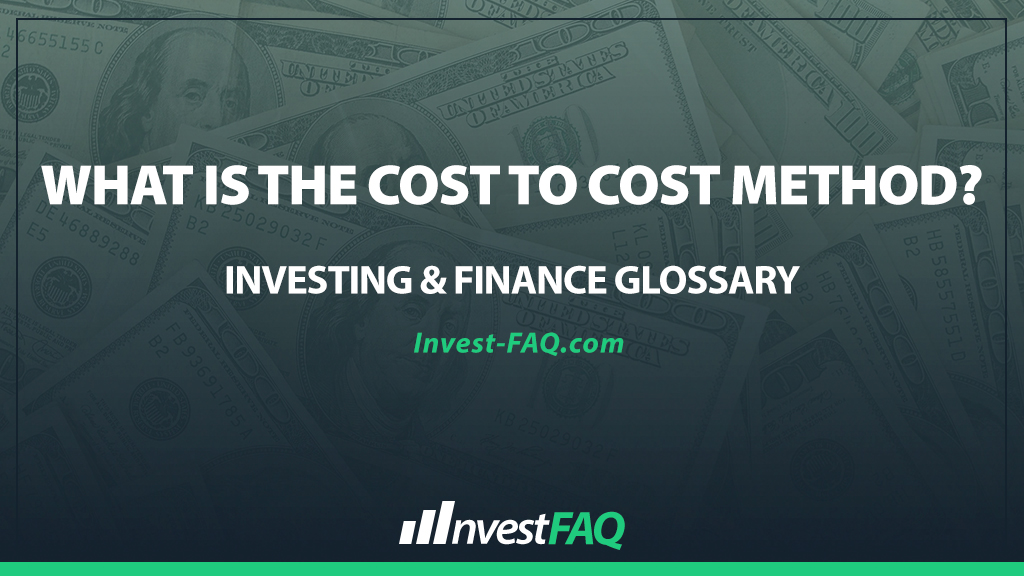
Cost To Cost Method
Contents
The cost-to-cost method is a fundamental accounting approach used to recognize revenue and measure the extent of completion for long-term projects by comparing the costs incurred to the estimated total costs. This method is pivotal in industries where projects span over multiple accounting periods, such as construction, engineering, and government contracting.
In the business realm, the cost-to-cost method offers a systematic way to gauge financial progress and performance on extended projects.
By recognizing revenue proportionally to the work completed, companies can ensure their financial statements accurately reflect ongoing operations, avoiding significant revenue and income fluctuations between reporting periods.
This method aligns with the accrual basis of accounting, ensuring revenues and expenses are recorded when earned or incurred, not merely when cash is exchanged.
Example of a Cost To Cost Method
Consider BridgeBuild Inc., a construction company awarded a bridge construction project with a contract value of $10 million and an estimated total cost of $8 million. Suppose that by the end of the first fiscal year, BridgeBuild Inc. has incurred $3.2 million in costs related to the project.
To apply the cost-to-cost method, BridgeBuild Inc. calculates the percentage of project completion as follows:
Percentage of Completion=( Costs Incurred to Date / Total Estimated Costs ) ×100 = ($3,200,000 / $8,000,000 )×100=40%
Based on this calculation, the company can recognize 40% of the total expected revenue, equating to:
Revenue Recognized=Total Contract Value×Percentage of Completion=$10,000,000×40%=$4,000,000
In this example, the initial computation of the project’s completion rate allows BridgeBuild Inc. to methodically recognize revenue, ensuring financial reporting mirrors actual project progress.
The recognition of $4 million in revenue reflects the equitable entitlement based on the project phase completed, with this approach facilitating smoother income and expense alignment over the project’s life.
Importantly, the company also evaluates the profit recognition in line with the project’s advancement. Assuming a consistent profit margin across the project, BridgeBuild Inc. would recognize a proportional amount of the total expected profit concurrently with the revenue recognition.
Significance for Investing & Finance
The cost-to-cost method holds significant importance in accounting for several reasons:
Accurate Progress Measurement: It allows for an accurate depiction of a project’s financial status and progress, aligning revenue recognition with actual work completed rather than cash flows.
GAAP Compliance: This method adheres to Generally Accepted Accounting Principles (GAAP), which emphasize the matching principle, ensuring that expenses are reported in the same period as the revenues they helped generate.
Enhanced Financial Analysis: By providing a realistic view of revenue and profit over the duration of long-term projects, the cost-to-cost method aids stakeholders in assessing a company’s performance and operational efficiency more accurately.
In essence, the cost-to-cost method is an indispensable tool in the accounting toolkit, especially for sectors engaged in long-term projects.
It not only ensures compliance with accounting standards but also enhances the reliability and relevance of financial reporting, thereby supporting informed decision-making by management and stakeholders alike.
FAQ
How does the cost-to-cost method calculate the percentage of completion for a project?
The cost-to-cost method calculates the percentage of completion by dividing the total costs incurred to date by the estimated total costs of the project, then multiplying by 100 to get a percentage that reflects the project’s progress.
Can the cost-to-cost method be used for any type of project?
While the cost-to-cost method is widely applicable, it is most effective for long-term projects with significant costs that can be reliably estimated and where progress can be measured by the costs incurred, such as construction or manufacturing projects.
What happens if the estimated total costs of a project change during its execution?
If the estimated total costs change, the percentage of completion and the revenue recognized to date must be adjusted accordingly, which can lead to recognizing more or less revenue in the current period based on the new estimates.
How does the cost-to-cost method impact financial reporting?
The cost-to-cost method impacts financial reporting by allowing companies to recognize revenue proportionally to the completion of a project, smoothing income over the life of the project and reflecting work progress in financial statements.
